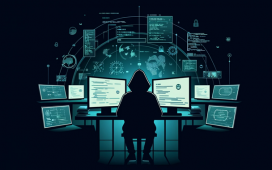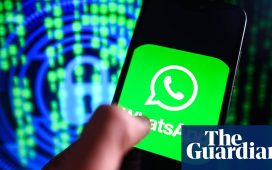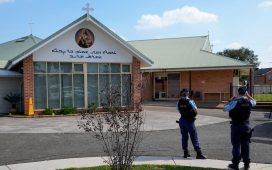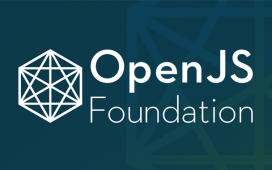Best listening experience is on Chrome, Firefox or Safari. Subscribe to Federal Drive’s daily audio interviews on Apple Podcasts or PodcastOne.
By now the stories are legend, how government agencies managed to pivot their workforces to accommodate the pandemic. Underneath that is a big technological shift that’s still unfolding. For one view of where it’s all headed, Federal Drive with Tom Temin turned to the president of U.S. regulated industries at Microsoft, Toni Townes-Whitley.
Tom Temin: Mrs. Townes-Whitley, good to have you on.
Toni Townes-Whitley: Hey, thank you. Good to be on Tom.
Tom Temin: So are we seeing something more than just mass laptops and rapid expansion of virtual private networks or is there something more profound going on in the technological underpinnings of how really the world is working?
Toni Townes-Whitley: Well, look, I think it’s true for some agencies, they did add additional VPN. But for the most part, the pandemic spurred organizations to issue waivers around existing federal mandates like the trusted internet connection, and really start to create connections to the cloud, allowing their employees to access the cloud versus going through VPN directly. I look at State Department, hundreds of thousands of employees move into a remote work setting. In DoD it was a mandate for million users to use our productivity platform, our team’s productivity platform at Microsoft, they were able to communicate and work together in an infrastructure that went directly through the cloud. I think almost every agency went into crisis mode, realized they owned a lot of tech, they hadn’t turned it all on, they immediately started to do that. And they started to eliminate that technical debt, which is that tech that’s not being used or adopted. They started issuing waivers for existing mandates that had been 15 to 20 years old. And they started to reevaluate what security look like in this new environment. So I would say substantive change has occurred.
Tom Temin: Yes, we’ve talked to a lot of agencies and they all say that, yes, they want to get their people directly to the cloud services providers that they use, there’s Microsoft and its competitors. What does that do to the network architecture? Because before it was a perimeter, and everything connected almost in a latter day client server type of setup.
Toni Townes-Whitley: Well, now what you really see is moving to a zero trust infrastructure, which is hybrid in nature, right. It is the on-prem and cloud, I think you’ll hear some words coming through this pandemic, that will stay with us. Hybrid infrastructure, hybrid workforce, hybrid environment, all of that is going to be driving a new way of engaging with the cloud and on-prem and how to secure that. We saw a mindset shift from security, to resiliency, sort of security and motion under crisis, underpinning sort of more agile, flexible development and very quick decision making. So I would say the shift very simply is from no it’s not secure sort of binary decisions about security and physical infrastructure to how do we make and move faster in a secure environment. So you will hear more and more about not only security and hybrid, but the fact that the platform really matters and having secure platforms to do this work is going to be very significant going forward.
Tom Temin: And of course, Homeland Security, CISA, has been working on this Tic 3.0 initiative, which is a nod to the fact that cloud hosted security is where people want things to happen, and not as they call it, hair pinning all the traffic back through your tick device and back out to the cloud, and so on latency and a lot of reasons. So would you say that the Tic initiative kind of got a kick in the pants maybe through all of this?
Toni Townes-Whitley: Yeah, I would say so. And I think it’s basically coming to the reality of this hybrid workplace, that as you’re going to support both, if you will, some on prem and cloud computing, and you’re going to support a hybrid workforce that may continue to remotely work, even post pandemic, I think this is the new definition of what security will look like. And what Tic in its next iteration will have to be — so absolutely. And it’s being forced there but I actually think there’s a growing demand side of that equation as well by each agency as they lived through these last seven months.
Tom Temin: And these emerging architectures and zero trust and cloud based security services and the rest of it — does this simplify things for network administrators? Are we getting more complex here?
Toni Townes-Whitley: Look, I think for everything that’s new, we sort of initially have to talk about some form of change management. But it really does require a mindset shift. I don’t think it’s about is it harder or easier, but simply do we shift to how we think about security by identity, by access and access controls by assuming zero trust, assuming that we’re not just securing the perimeter, but that we start with the assumption that no information is needed. All information has to be secured. And then we start to give roles and access and rights based on specific scenarios. It’s a different way of thinking about security. I think that’s going to be the opportunity to inherently secure access to various mission systems, and really to drive this resiliency so that we could face not only if we had to face something in the future, we’ve got much more agility in our underpinning tech.
Tom Temin: And we’ve been talking about the employees and their connection to government and its resources to do their jobs. And before all of this, the focus was on digital services deployed to the public. The other end of what happens in the IT I guess continuum, and a lot of agencies saw that they had to expand rapidly and maybe come back rapidly, this elastic idea, SBA, Treasury, so many departments. What do you see is the future of the underpinnings for digital services going ahead based on what we’ve learned in the pandemic?
Toni Townes-Whitley: Again, I go back to the supply demand curve, I started my career as an economist and I go back to this understanding that the demand for those services I believe is increasing and will increase. And a hybrid work environment where digital fluency has increased as individuals working remotely have had to learn new tools, have had to been engaged online, you’re going to start to see the demand side of the equation from not only citizens but also government employees, for more digital services. SBA had a huge task in front of them, did an amazing job navigating a pandemic environment, the volume of transactions that occurred a very short span of time with legacy systems they had been burdened with. And they really tried to take advantage of as much as they could, given the tight timelines. And it’s hard to modernize in a day. So you have to take an aggressive posture. At Microsoft, we call this sort of construct, it’s sort of a leadership construct, we call it tech intensity, the ability to adopt technology rapidly, but also build unique digital skills that you need for your organization. And then do that in an environment where you quite frankly trust the tech and you trust each other. And that I think is the future for digital services for government is that tech intensity equation for the citizen and for the government employee.
Tom Temin: And what have you seen on the acquisition front, because to have all the speed and agility and ability to adopt new technology, often the FAR type of and talk about regulated industries — that can be kind of Achilles heel in all of this?
Toni Townes-Whitley: Well, look, I think in the world of crisis, and speed and immediate decision making and or scarcity or remote work, we’ve seen some relaxation of 25 year old procurement standards. We’ve seen a change arise in the amount of what governments could do. And if you will procure without a formal procurement competition, we’ve seen just different ways that government is engaged to learn more about tech in advance of a procurement. But to get themselves really well involved and engaged ahead of time, we’ve seen a lot of sort of opening to the conversation that I’m sure all commercial companies want is that an informed customer is the best customer. And so this idea of learning quickly, and getting digital skilling is going to underpin hopefully changes in the speed velocity of our procurement cycles, as well as the understanding of what kind of role technology has and what it can bring to an agency.
Tom Temin: I guess the current youngest generation, generation z, could be called the zoom generation, you’re hoping the next one will be generation T for teams. And I wanted to ask you, though, people that have, all of us really, have spent hours and hours and hours on these platforms, what did the engineering side of Microsoft tell you that they’re working on? What is needed next in these types of platforms like teams?
Toni Townes-Whitley: Well we’ve grown. One of the things we love about our culture is we call ourselves a sort of a growth mindset, some work that we did with Stanford University to go into a culture of learning versus trying to be know it alls, right. We’ve been learning through this process as well. And our teams team, if I could say that that way, has been learning with us, we’ve been learning what is it to have a gallery view so you can see, how do you create a classroom like view with the backdrop being in a classroom? How do you involve, sort of raise your hand and be right back kind of functions? How do you ensure that people can break out in small breakout rooms. We’ve been having to sort of build, if you will, new capabilities based on the demands of so many sectors being online, we’ve gotten to a place of universal capacity, which means we won’t be out of capacity, we can continually support teams as it’s been exponential in the growth. So as we look forward, the question will be, how will we deliver various sectors? How will sectors kind of do their jobs going forward with productivity tools, as well as real time physical interaction? And I think that’s where we get excited, because a lot of the work at Microsoft involves the, if you will, intersection of the digital world, and the physical world and the work we do in mixed reality. And we see that as the future. The intersection, not a single answer in one domain, but actually the ability to move between domains. And I think people are starting to see that experience with teams. And yes, I hope there is a generation to come forward.
Tom Temin: Well, I would say that maybe duplexed sound and higher bandwidth sound would be a big addition to all of these types of platforms. That’s my suggestion.
Toni Townes-Whitley: Thank you. Well, we’ll take that, I’ll put that one right into the engineering team. I think the found, the sense of inclusion, the ability to engage real time a lot of folks live on chat. And there are so many sort of symbols of chat. We’re finding more and more ways to engage and show inclusion, as well as we want to make sure that it works for all ages and accessibility. So that’s another sort of horizon for all organizations in this online world. Inclusion inclusion inclusion.
Tom Temin: Toni Townes-Whitley is president of US regulated industries at Microsoft. Thanks so much for joining me.
Toni Townes-Whitley: Hey, thanks, Tom. Really appreciate the discussion.






